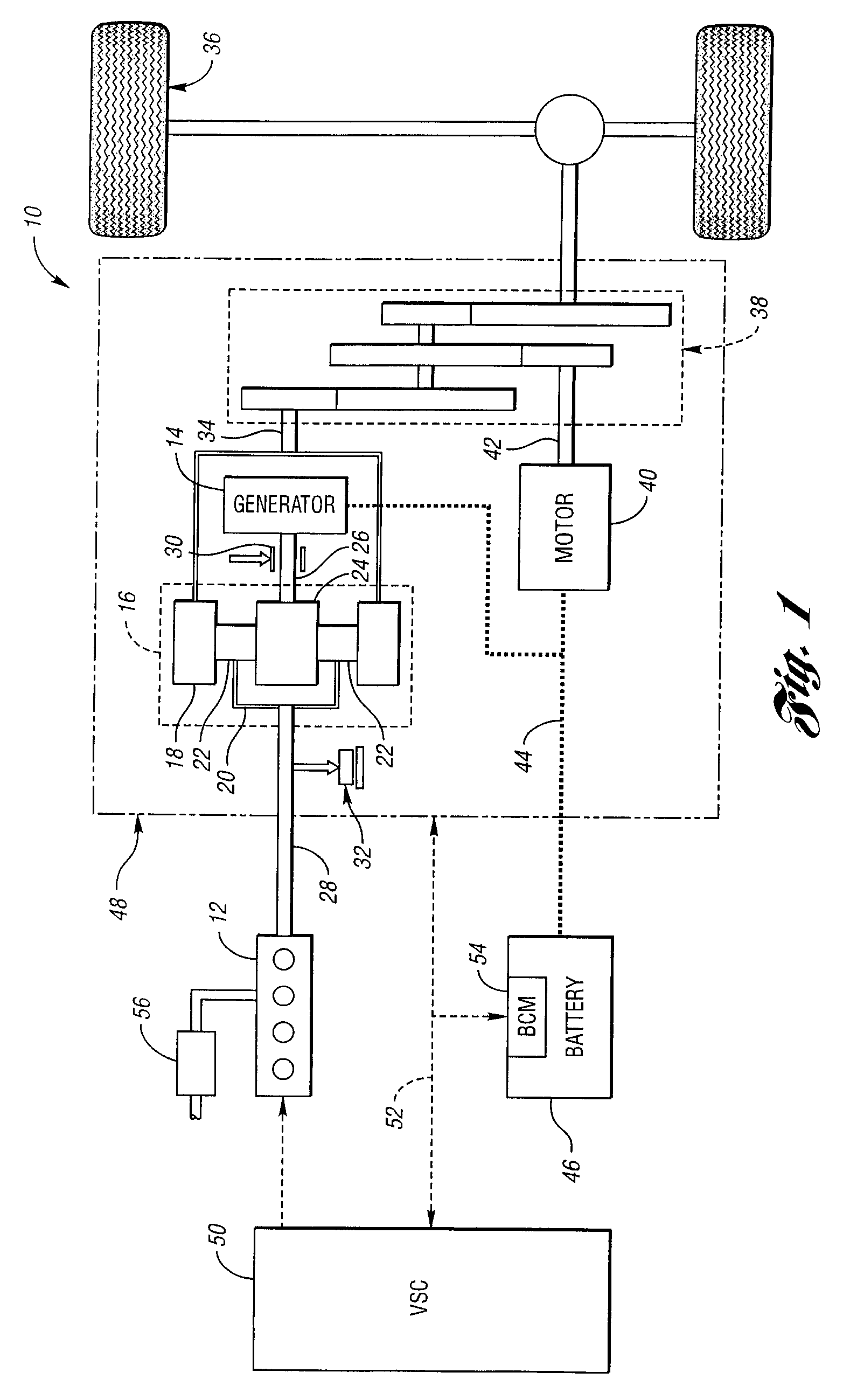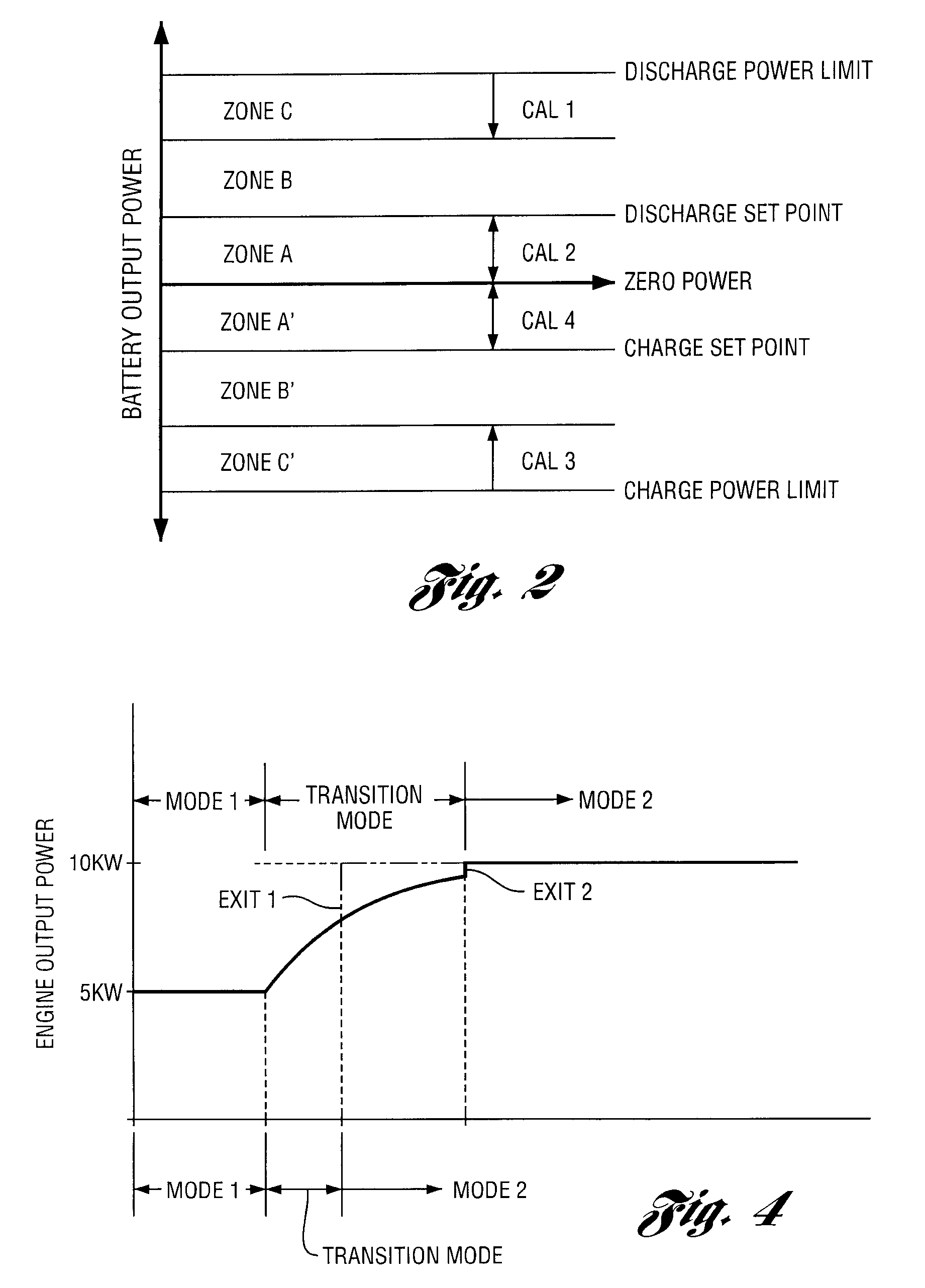Vehicle and method for operating a vehicle to reduce exhaust emissions
a technology of exhaust emissions and vehicles, applied in hybrid vehicles, exhaust treatment electric control, electrical control, etc., can solve the problems of relying on a separate, and reducing the efficiency of the engine, so as to reduce the emission, reduce the emission, and reduce the effect of exhaust emissions
- Summary
- Abstract
- Description
- Claims
- Application Information
AI Technical Summary
Benefits of technology
Problems solved by technology
Method used
Image
Examples
Embodiment Construction
[0018]FIG. 1 shows a schematic representation of a vehicle 10 in accordance with the present invention. The vehicle 10 includes an engine 12 and an electric machine, or generator 14. The engine 12 and the generator 14 are connected through a power transfer unit, which in this embodiment is a planetary gear set 16. Of course, other types of power transfer units, including other gear sets and transmissions may be used to connect the engine 12 to the generator 14. The planetary gear set includes a ring gear 18, a carrier 20, planet gears 22, and a sun gear 24.
[0019] The generator 14 can also be used as a motor, outputting torque to a shaft 26 connected to the sun gear 24. Similarly, the engine 12 outputs torque to a shaft 28 connected to the carrier 20. A brake 30 is provided for stopping rotation of the shaft 26, thereby locking the sun gear 24 in place. Because this configuration allows torque to be transferred from the generator 14 to the engine 12, a one-way clutch 32 is provided ...
PUM
 Login to View More
Login to View More Abstract
Description
Claims
Application Information
 Login to View More
Login to View More - R&D
- Intellectual Property
- Life Sciences
- Materials
- Tech Scout
- Unparalleled Data Quality
- Higher Quality Content
- 60% Fewer Hallucinations
Browse by: Latest US Patents, China's latest patents, Technical Efficacy Thesaurus, Application Domain, Technology Topic, Popular Technical Reports.
© 2025 PatSnap. All rights reserved.Legal|Privacy policy|Modern Slavery Act Transparency Statement|Sitemap|About US| Contact US: help@patsnap.com



